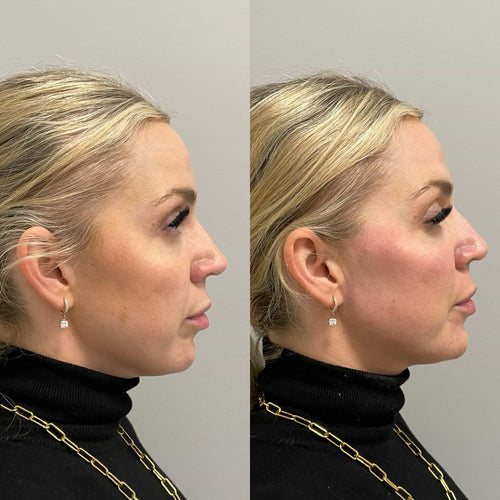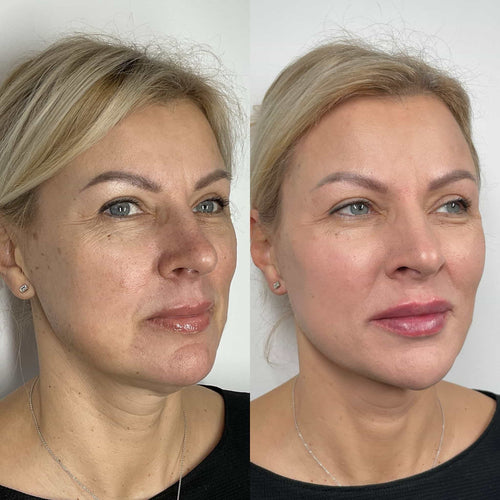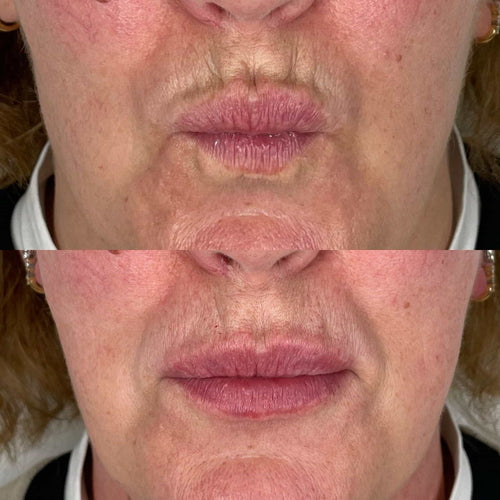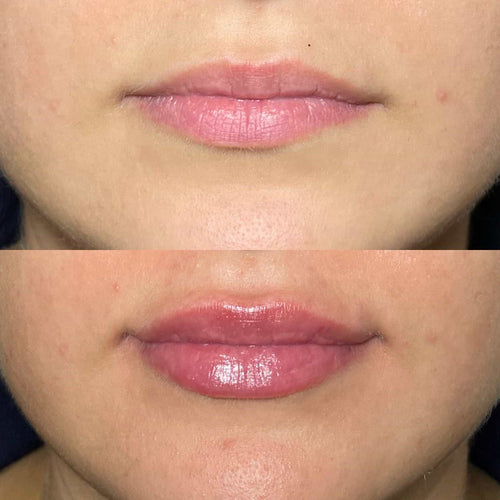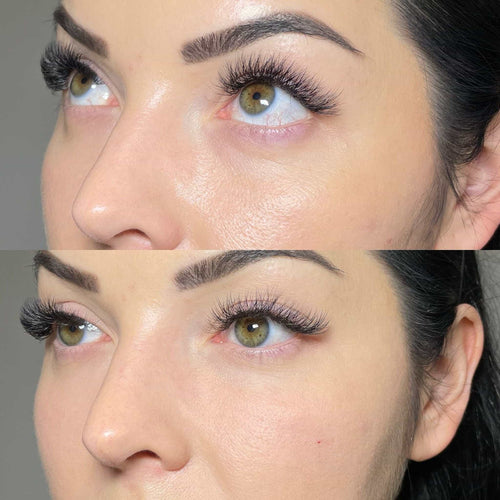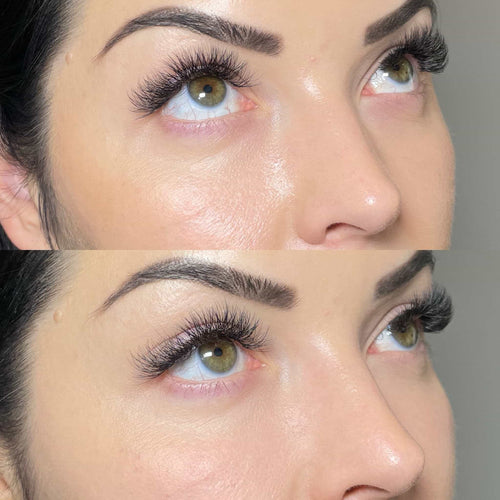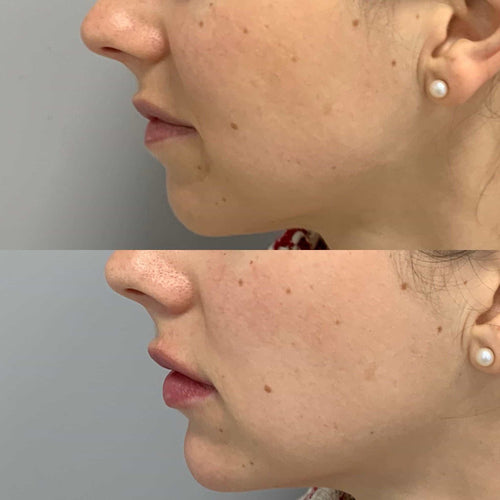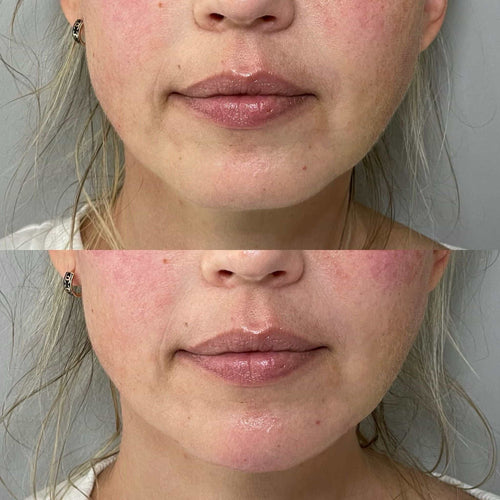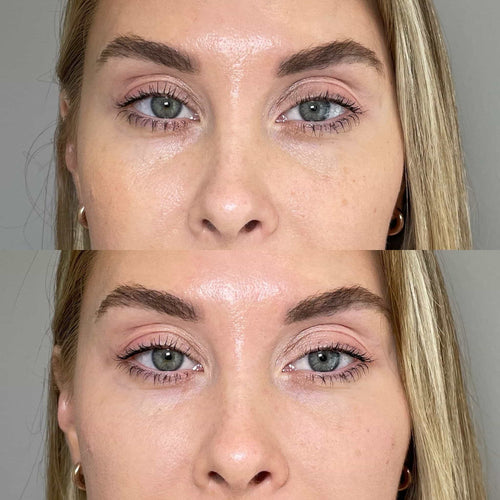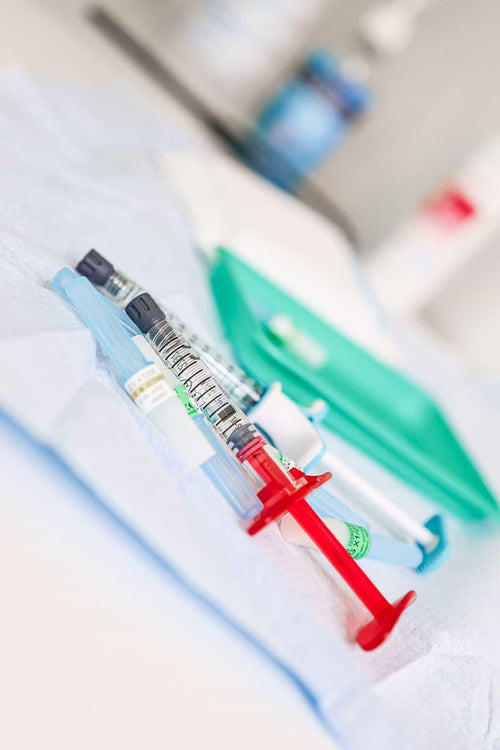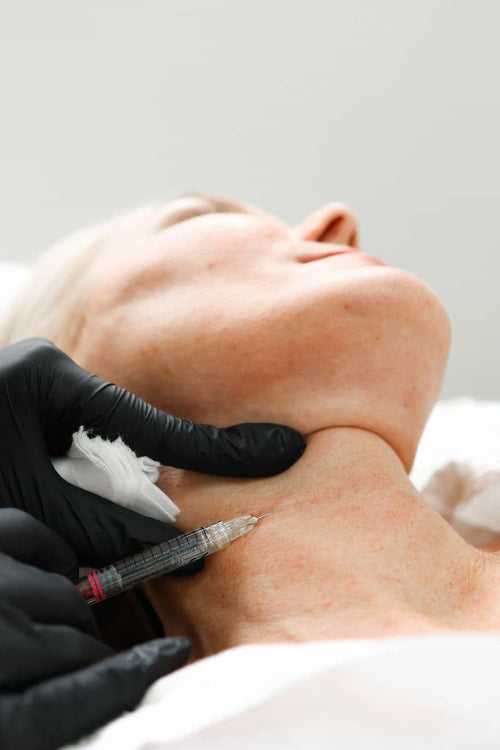How To Dissolve Lip Filler Naturally At Home
Schedule a Dermal Filler Consultation with Dr. Laura Geige Today
Understanding Lip Filler Dissolution
How Lip Fillers Work
Lip fillers are a popular cosmetic treatment used to enhance lip volume, shape, and definition. They work by injecting hyaluronic acid (HA) into the lips. Hyaluronic acid is a naturally occurring substance in the body that binds to water, giving the lips a fuller appearance.
There are various types of HA fillers available, each with different properties and formulations. Some fillers are designed for immediate volume enhancement, while others are longer-lasting. The results of lip fillers typically last anywhere from 6 months to 2 years, depending on factors like the type of filler used, individual metabolism, and lifestyle.
Dissolving lip fillers involves breaking down the hyaluronic acid molecules using an enzyme called hyaluronidase. Hyaluronidase is naturally found in the body and its role is to break down HA in tissues. In a medical setting, dissolved HA is absorbed by the body’s lymphatic system and excreted.
It’s important to note that attempting to dissolve lip fillers at home can be dangerous and ineffective.
Using unapproved substances or methods can lead to complications such as infection, allergic reactions, uneven results, tissue damage, and scarring.
Get Started with Dermal Fillers – Book with Dr. Laura Geige
Always consult a qualified and experienced medical professional for any lip filler treatment, including dissolving unwanted filler.
Types of Lip Fillers
Understanding lip filler dissolution is crucial for anyone considering either getting fillers or dissolving existing ones. Lip fillers, primarily composed of hyaluronic acid (HA), are a popular cosmetic procedure that adds volume and definition to the lips.
The body naturally breaks down HA over time, which is why lip fillers are temporary. This process, however, can take several months. Dissolving lip filler involves accelerating this natural breakdown using an enzyme called hyaluronidase.
Hyaluronidase is specifically designed to break down hyaluronic acid molecules. It’s injected into the area where the filler was placed, effectively reversing the effects of the filler.
Types of Lip Fillers: There are various types of lip fillers available, each with its unique characteristics and longevity. Some common types include:
-
Hyaluronic Acid (HA) Fillers: These are the most popular type of lip filler, offering natural-looking results that last anywhere from 6 months to over a year.
-
Calcium Hydroxylapatite (CaHA): This is a semi-permanent filler that lasts up to two years. It’s known for its ability to stimulate collagen production, enhancing long-term lip volume.
-
Polymethylmethacrylate (PMMA): PMMA is a permanent filler option. While it offers lasting results, it’s considered more invasive and carries potential risks.
Choosing the right type of lip filler depends on individual needs, desired outcomes, and budget. It’s essential to consult with a qualified and experienced injector to determine the most suitable option.
Recognizing Dissatisfaction with Results

Dissolving lip filler involves reversing the effects of hyaluronic acid (HA) injections, a common cosmetic procedure used to enhance lip volume and shape.
Hyaluronic Acid (HA) fillers are temporary and naturally degrade over time. However, for those unhappy with their results or experiencing complications, dissolving them is an option.
There are two main methods for dissolving HA filler:
- **Enzymatic Dissolution:** This method involves injecting an enzyme called hyaluronidase into the treated area. Hyaluronidase breaks down the HA filler molecules, gradually restoring the lips to their original shape.
- **Dissolving with Warm Compresses:** Some individuals believe that applying warm compresses to the lips can encourage the natural breakdown of HA filler, although scientific evidence supporting this method is limited.
Recognizing dissatisfaction with lip filler results is crucial for seeking timely intervention.
Common signs include:
- Unevenness or asymmetry:** One lip appears larger or differently shaped than the other.
- **Overfilled lips:** The lips appear excessively full, unnatural, or “duck-like.”
- **Lumps or bumps:** Hard or soft lumps form within the filler area.
- Migrating filler:**
- Infection or inflammation:** The treated area becomes red, swollen, painful, or oozing.
Filler has shifted from its intended location.
If you are experiencing any of these issues, consult with a qualified healthcare professional. They can assess the situation and recommend the appropriate course of action.
Natural Home Remedies for Dissolving Lip Filler
Warm Compresses
Schedule Your Dermal Fillers with Dr. Laura Geige at It’s Me and You Clinic
It’s important to understand that attempting to dissolve lip filler at home using natural remedies can be risky and potentially harmful. Hyaluronic acid fillers, the most common type, are designed to be gradually broken down by the body over time.
While some natural ingredients are thought to promote collagen production or lymphatic drainage, there’s no scientific evidence to support their effectiveness in dissolving injected fillers.
Attempting to dissolve fillers yourself could lead to uneven results, infections, and other complications. It’s crucial to consult with a qualified medical professional for safe and effective filler removal.
If you are unhappy with the appearance of your lip filler, speak to your injector or a dermatologist about potential solutions like hyaluronidase, a medication that specifically breaks down hyaluronic acid fillers.
Warm compresses may be suggested as a complementary therapy alongside professional treatment to help with discomfort or swelling, but they won’t dissolve the filler itself.
Bromelain Enzyme
Dissolving lip fillers at home using natural remedies is a popular topic, but it’s crucial to understand that there’s no scientifically proven method to completely dissolve hyaluronic acid fillers like Juvederm or Restylane naturally.
Hyaluronic acid fillers are designed to be gradually absorbed by the body over time. While some home remedies claim to speed up this process, their effectiveness is largely anecdotal and not supported by robust scientific evidence.
One remedy that has gained attention is the use of **_Bromelain Enzyme_**. Bromelain is a mixture of enzymes derived from pineapples. It’s known for its protein-digesting properties and has been suggested as a potential way to break down hyaluronic acid fillers.
However, it’s important to note that there’s limited research on bromelain’s effectiveness in dissolving lip fillers, and any potential benefits are likely to be minimal. Furthermore, applying bromelain directly to the lips could cause irritation, redness, or allergic reactions in some individuals.
It’s essential to consult with a qualified medical professional if you’re considering dissolving your lip fillers. They can assess your individual situation, discuss potential risks and benefits, and recommend the safest and most effective approach for you.
Essential Oils
Dissolving lip filler naturally at home can be risky and often ineffective. While there are some traditional remedies that claim to dissolve fillers, it’s crucial to understand that they lack scientific backing and may even cause more harm than good.
One popular remedy involves using essential oils like peppermint oil or bromelain. These substances have anti-inflammatory properties and are thought to break down hyaluronic acid fillers. However, there is no evidence to support these claims. Furthermore, applying essential oils directly to the lips can cause irritation, burning, and allergic reactions.
Another remedy involves using warm compresses or ice packs. While these methods may temporarily reduce swelling associated with lip filler, they do not dissolve the filler itself.
It’s important to remember that lip fillers are medical procedures and should only be dissolved by a qualified medical professional. Attempting to dissolve them at home can lead to uneven results, infections, and other complications.
If you’re unhappy with your lip filler results, consult with a board-certified dermatologist or plastic surgeon. They can safely and effectively dissolve the filler using Hyaluronidase, an enzyme specifically designed for this purpose.
Important Considerations and Precautions
Professional Consultation is Key
Dissolving lip filler at home is generally not recommended and can be risky. While there are DIY methods circulating online, they often lack scientific backing and can lead to complications like infection, scarring, and uneven results.
Lip fillers are injected with hyaluronic acid (HA), a gel-like substance that attracts water and plumps the lips. Dissolving them involves breaking down this HA, which typically requires an enzyme called hyaluronidase.
Hyaluronidase is a potent medication that should only be administered by a qualified medical professional. Using it incorrectly can cause severe side effects.
Furthermore, attempting to dissolve lip filler at home without proper knowledge of anatomy and sterile techniques can damage the delicate tissues around your lips.
If you are unhappy with your lip filler results or want to remove them completely, consult a board-certified dermatologist or plastic surgeon.
They have the expertise and experience to dissolve the filler safely and effectively using proper techniques and medications.
Remember, your health and safety should always be the top priority. Don’t risk complications by attempting DIY lip filler removal.
Potential Side Effects and Risks
Dissolving lip filler at home can be dangerous and potentially harmful. It’s crucial to understand the risks involved before attempting this procedure.
Important Considerations and Precautions:
-
Seek Professional Guidance: The safest and most effective way to dissolve lip filler is through a qualified medical professional like a dermatologist or plastic surgeon. They have the expertise, training, and sterile environment necessary for this procedure.
-
Ingredients:** Many home remedies use harsh chemicals that can cause skin irritation, allergic reactions, and permanent damage.
-
Improper Technique: Incorrect application of any substance can lead to uneven results, lumps, scarring, and infection.
-
Underlying Conditions: Some medical conditions might make dissolving filler at home more dangerous. Consult with your doctor first if you have any concerns.
Potential Side Effects and Risks:
-
Skin Irritation and Inflammation:** Home remedies can cause redness, swelling, itching, burning, and blistering.
-
Allergic Reactions: Ingredients in some home remedies can trigger severe allergic reactions, including anaphylaxis.
-
Infection: Using unsterilized tools or ingredients increases the risk of bacterial infection.
-
Lumps and Nodules:** Improper application can result in unevenly dissolved filler, leading to lumps and nodules beneath the skin.
-
Scarring: Damage to the skin from harsh chemicals or improper technique can lead to permanent scarring.
-
Pigmentation Changes:** Some ingredients can alter skin pigmentation, causing discoloration.
It is strongly advised to avoid attempting to dissolve lip filler at home. The potential risks and complications significantly outweigh any perceived benefits. Consult with a qualified medical professional for safe and effective lip filler removal.
Realistic Expectations and Timeframe
Dissolving lip filler at home can be risky and potentially dangerous due to the lack of sterile equipment and professional knowledge.
It’s crucial to understand that dissolving fillers requires precise injection techniques and a thorough understanding of facial anatomy. Attempting this at home could result in uneven results, bruising, scarring, infections, or even permanent damage to your lips.
The safest and most effective way to dissolve lip filler is through a qualified medical professional using Hyaluronidase, a specific enzyme designed to break down hyaluronic acid fillers.
While there are many home remedies circulating online claiming to dissolve fillers, these often lack scientific evidence and can be harmful.
Remember, your health and safety are paramount. Consulting a licensed aesthetic practitioner is the only responsible approach when considering dissolving lip filler.
Line the Studio Goonie Yoga and Therapy MS Style and Grace Clover Design Online Prince and Flower Your Relationship Edge


